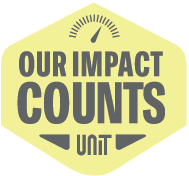The Buzzword That’s Going to Amp Up Our Impact
By Melissa Schweyer, Guest Blogger | Creator CSRtist | February 24, 2016
This post from Melissa Schweyer is the first in our Partner Perspectives blog series. In this series, we’ll feature diverse voices answering question “How can for-benefit business collaborate with NGOs and nonprofits, government and traditional companies to create change?” What are your thoughts on the topic? Share them with [email protected] and you could be our next guest blogger!
“Partnership” has to be the hottest buzzword in the discussion of global sustainability.
And it’s for good reason. One of the largest takeaways from the Paris Agreements—apart from the agreements themselves—is the overwhelming emphasis placed on cross-sector cooperation, information sharing and synergy-seeking. Following COP21, leaders met again this past month in the United Arab Emirates at Abu Dhabi Sustainability Week, echoing the importance of forming multi-platform alliances and relationships.
Sign Up for Pegable Post to get ideas, advice and resources on activating your Purpose sent right to your inbox.
All sectors—from government to business to civil society—understand that they can’t solve the world’s challenges by maintaining their silos. If we want to have strong countries, successful businesses, a clean world and happy lives, we’re all going to have to come together to share our assets and resources. It’s the most effective way to address the socio-environmental challenges that lie ahead and those that we’ve already begun to experience.
Stakeholders from across the spectrum are now asking some really difficult questions:
- What will our partnerships look like?
- What issues should we seek to tackle first?
- Who aligns best with our goals?
Answers to these questions will vary from organization to organization and a lot will depend on who from those organizations is at the table.
I think a smart starting point for any organization is to take a good hard look at your mission, identify your assets and resources, and define the challenge you’re seeking to address. From there, you can make better sense of which other organizations share your goal and what resources or assets they might be able to contribute toward its achievement. In the best scenarios, their resources will compliment yours so that instead of duplicating efforts, you’re filling voids.
There are several instances where I already see this cross-sector collaboration happening.
Some transnational food and beverage companies are teaming up with environmental NGOs, experts and researchers to tackle deforestation and unethical palm oil sourcing and production practices. It’s in their best interest to do so, given the fact that they heavily rely on this natural resource, the unsustainable harvesting of which is negatively impacting the environment. You can check out the Roundtable on Sustainable Palm Oil to get a sense of how they’ve joined forced to create large-scale solutions to their shared challenges. You’ll see members as diverse as Burger King Corporation, the nonprofit Earth Innovation Institute and the social enterprise Endangered Species Chocolate.
Traditional companies within the fast fashion industry like Forever 21, Columbia and Volcom have forged synergies with recycling companies like I:CO in order to close the loop on textile waste and to cut down on water consumption. These are on-going issues that have plagued the clothing world for decades.
You can even look to the oil industry (yes, I said it), where some companies like Chevron are investing in renewable energy projects.
In the public sector, governments around the world are tackling issues relating to climate change by creating new partnerships and incentives that seek to expand business diversification, increase the use of clean technologies and create long-term sustainable solutions for the economy. While it has attracted scrutiny, the federal and state governments’ support of SolarCity is a prime example of a public/private collaboration to make large-scale change.
Though a lot of attention typically focuses on larger, public and global organizations, small-medium enterprises (SMEs) and local charities also play their part in a large way. There are many examples B Corporations and social enterprises teaming up in order to further their impact. To see this you need not look any further than
- Bullfrog Power, a B Corporation that provides B2B renewable energy solutions;
- Sea to Table, a B Corp that partners with small-scale sustainable fisheries, finding them better markets for their catch; and
- Impact Hub, a global network of co-working spaces for people with for-benefit businesses.
Heavily-quoted, but for good reason, Mahatma Gandhi once said, “If you want to go fast, go alone. If you want to go far, go together.” In this new and challenging era, we cannot lose sight of this concept. In order for us to really succeed long-term, organizations must forge new and meaningful partnerships. If we get things right, this buzzword will help us change our world for the better.



